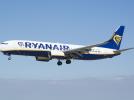Thomas Cook A332 at Manchester on Jun 24th 2013, rejected takeoff
A Thomas Cook Airbus A330-200, registration G-OMYT performing flight MT-314 from Manchester,EN (UK) to Punta Cana (Dominican Republic) with 325 people on board, rejected takeoff from Manchester's runway 23R at high speed (about 140 knots) after the right hand engine (Trent 772) emitted a loud bang and failed. The aircraft slowed safely and came to a stop at about half way down the runway. Emergency services responded and checked engine and brakes, the aircraft taxied to the apron afterwards where emergency services cooled down the brakes.
A replacement Airbus A330-200 registration G-MDBD departed Manchester 5 hours after the rejected takeoff and is currently estimated to reach Punta Cana with a delay of 6 hours.
The airline confirmed the incident aircraft rejected takeoff due to an engine failure. The engine is currently being examined.
On Jul 2nd 2013 the French BEA reported the takeoff was rejected at 140 knots due to an engine fault. The AAIB have opened an investigation into the occurrence rated a serious incident.
On Dec 12th 2013 the British AAIB reported in their bulletin that the takeoff was rejected at 105 KIAS after a flash and smoke from the right hand engine and associated loss of power. The investigation determined that the right hand engine failed because of the fracture of the a single high pressure turbine blade as result of high cycle fatigue crack propagation, causing an engine surge and damage further downstream into the intermediate and low pressure turbines and nozzles. Although the investigation report didn't name the videographer, it is obvious from the narration they used the Simon Lowe's video shown below as evidence into the investigation, too.
The AAIB reported that both IP (intermediate pressure) and LP (low pressure) spools of the engine became seized as result of debris jammed between turbine rotors and casings during run down of the engine.
The AAIB stated: "Laboratory analysis of the fractured blade root found multiple crack initiation locations caused by Type 2 Sulphidation corrosion. This led to high-cycle fatigue (HCF) propagation, weakening of the blade and subsequent material rupture in tensile overload. In addition, unidentified deposits were present on the surfaces of the blade remains which are the subject of ongoing analysis by the manufacturer."
Video by ground observer (Video: Simon Lowe):
Another ground observer's video (Video: Eddie Leathwood):
http://avherald.com/h?article=46455b06














Komentarze